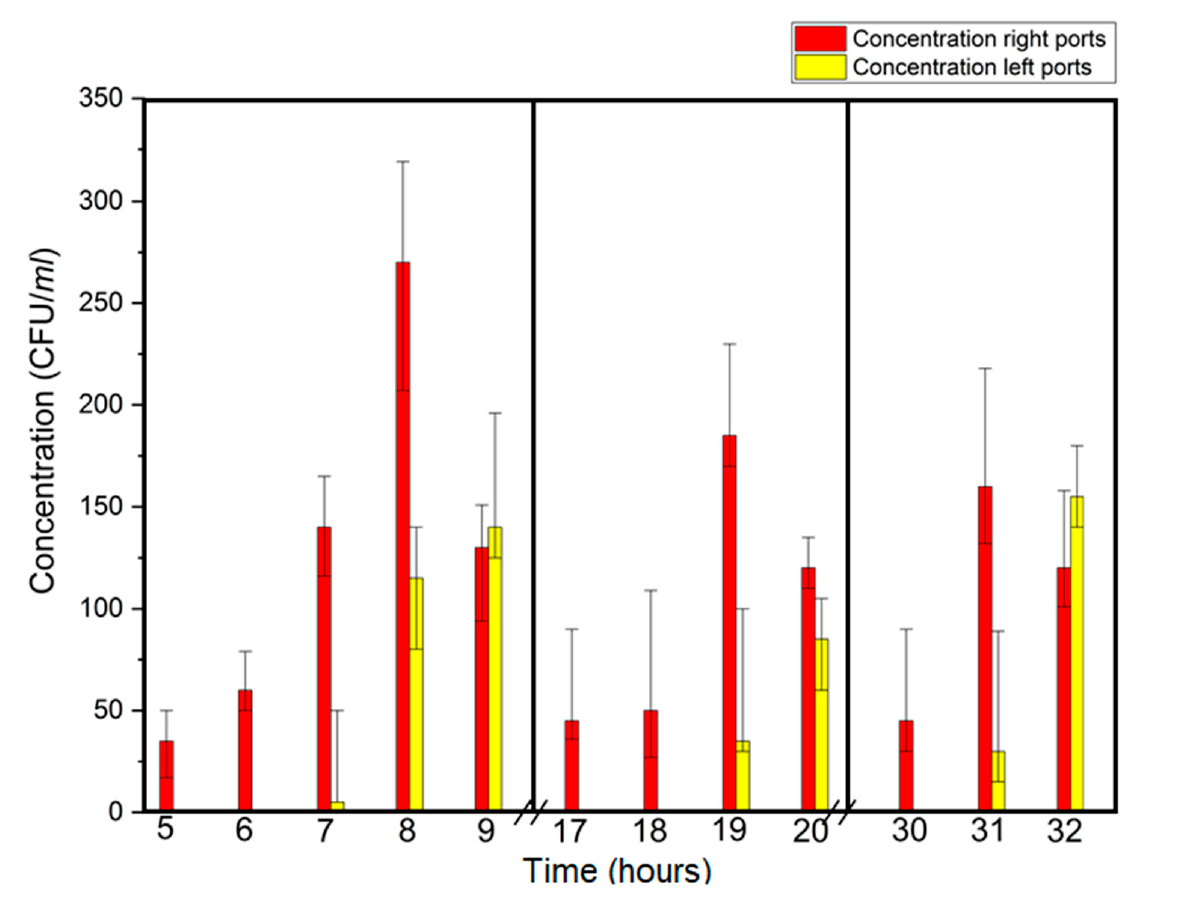Comparative Transport of Legionella and E. coli through Saturated Porous Media in a Two-Dimensional Tank
ABSTRACT
This study investigated bacterial transport in a two-dimensional (2-D) tank to evaluate the bacterial behavior of Legionella pneumophila as compared to Escherichia coli under saturated flow to simulate aquifer conditions. The experiments were performed in a 2-D tank packed with 3700 in3 (60,632 cm3) of commercially available bagged play sand under saturated conditions. The tank was disinfected by backwashing with 10% chlorine solution and subsequently neutralized by backwashing with tap water containing sodium thiosulphate (Na2S2O3) to ensure no chlorine residual. Bacterial transport was measured using samples collected from ports located at vertical transport distances of 5, 15 and 25 inches (12.7, 38.1 and 63.5 cm, respectively) below the sand surface along two vertical sections in the tank. An influent concentration of 105 CFU/mL was used for bacterial cells and the vertical fluid transport rate was 10.3 in/day (26.2 cm/day), controlled using a peristaltic pump at the bottom outlet. Legionella breakthroughs were recorded at 8, 22 and 35 h for the ports on the right side and 9, 24 and 36 h for the ports on the left side, at 5, 15 and 25 inch depths, respectively. At the same depths, E. coli breakthroughs were recorded at 5, 17 and 30 h for the ports on the right side and 7, 19 and 31 h for the ports on the left sides. The delay in Legionella transport compared to E. coli is homologous to Legionella’s pleomorphic nature. This study provides evidence of the mobility of both E. coli and Legionella in saturated aquifer conditions at a scale more representative of actual aquifer conditions. This study also provides a substantive basis for the premise that cell characteristics affect transport characteristics under those conditions.



